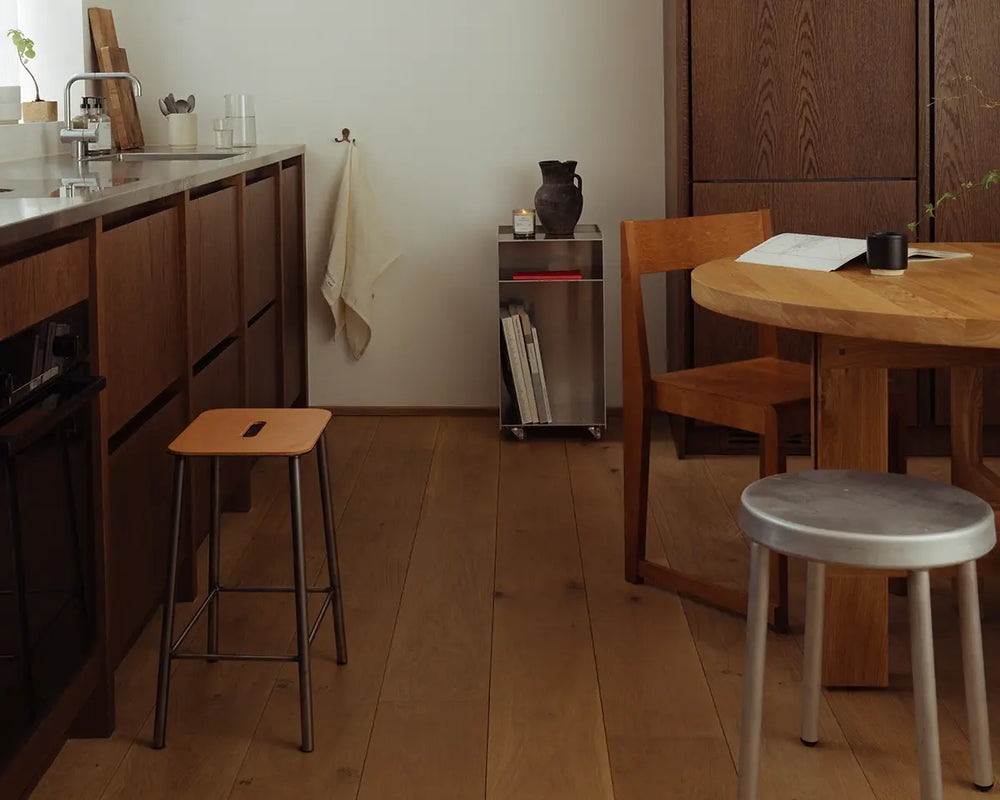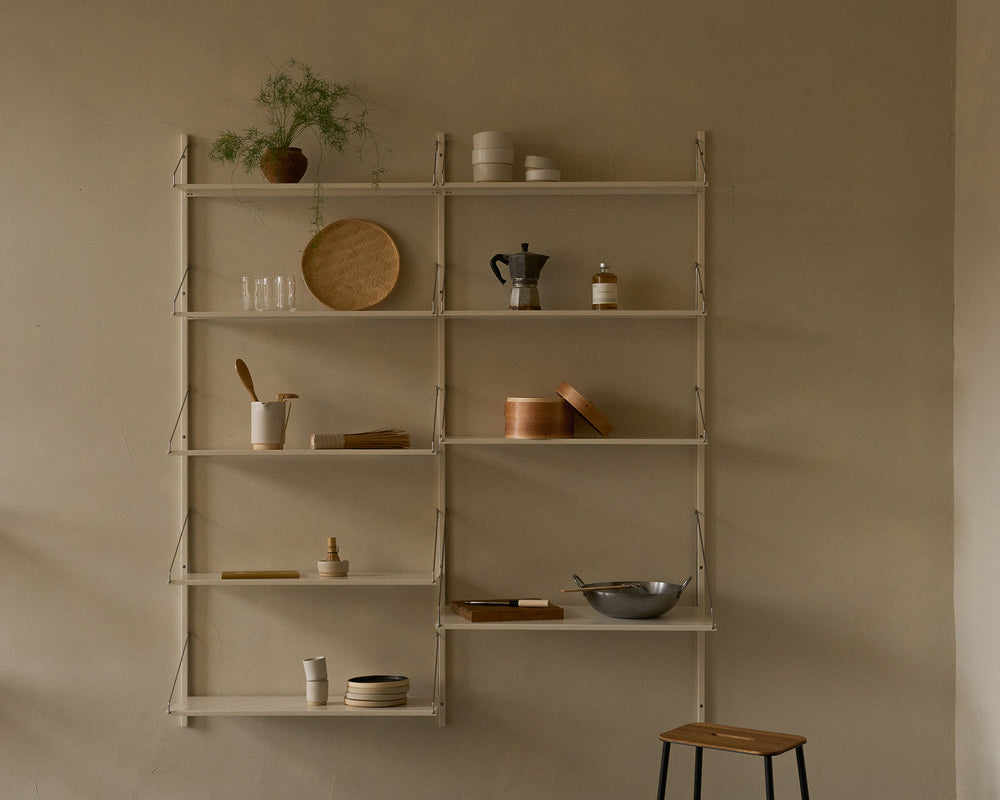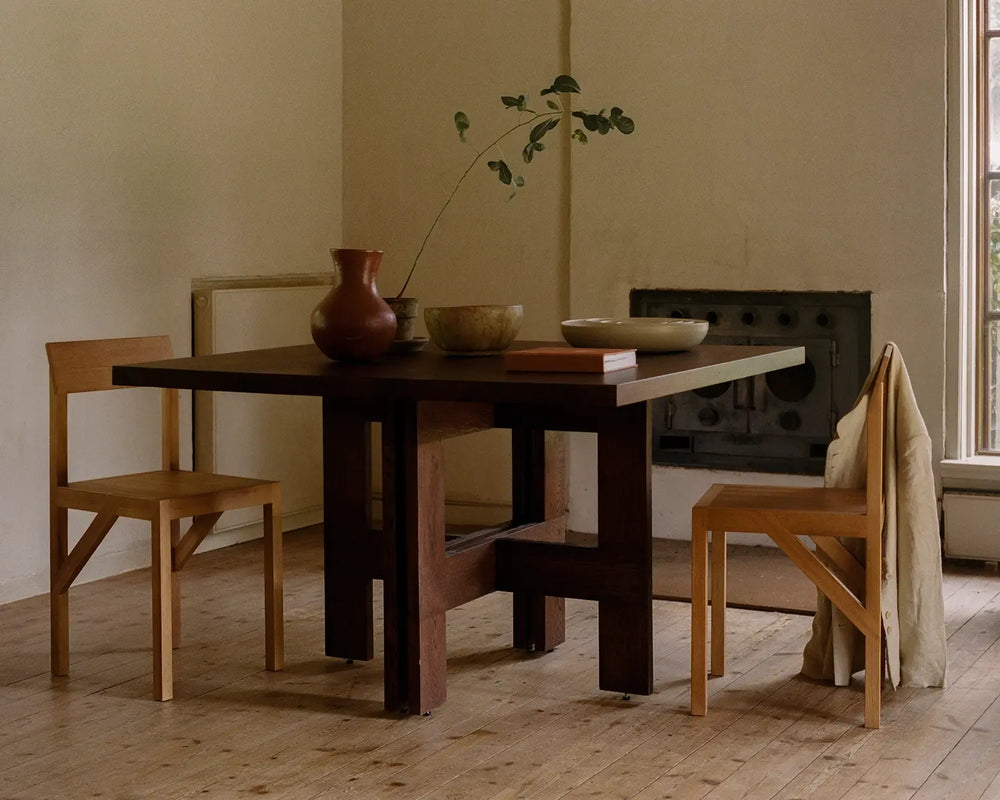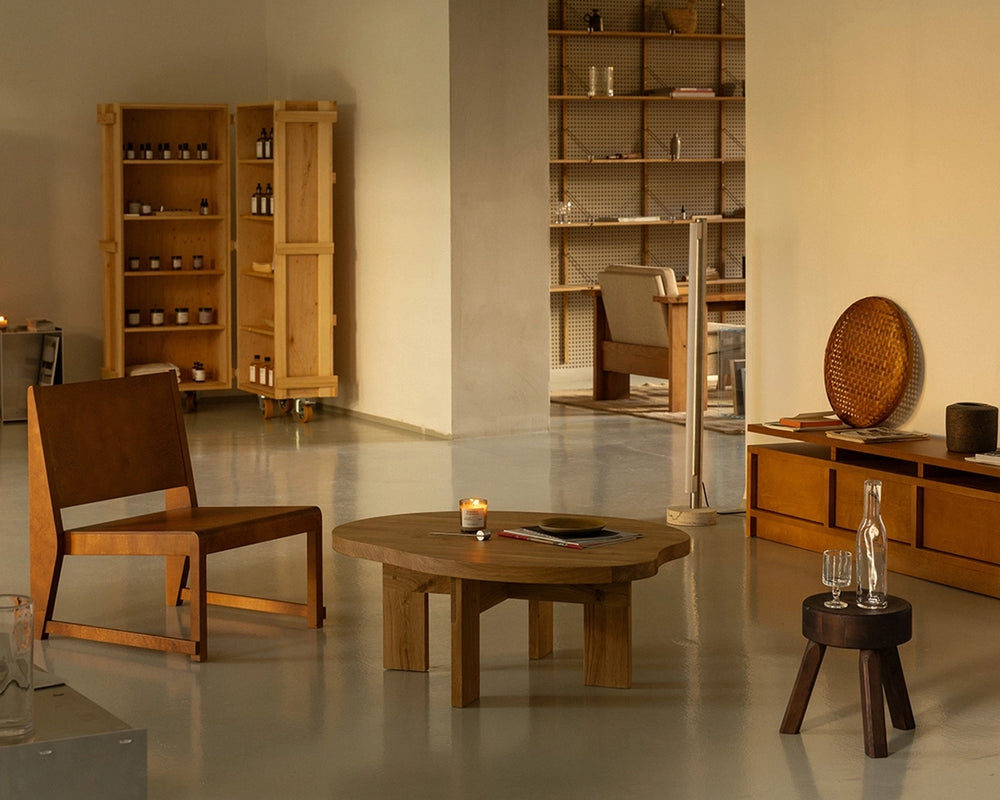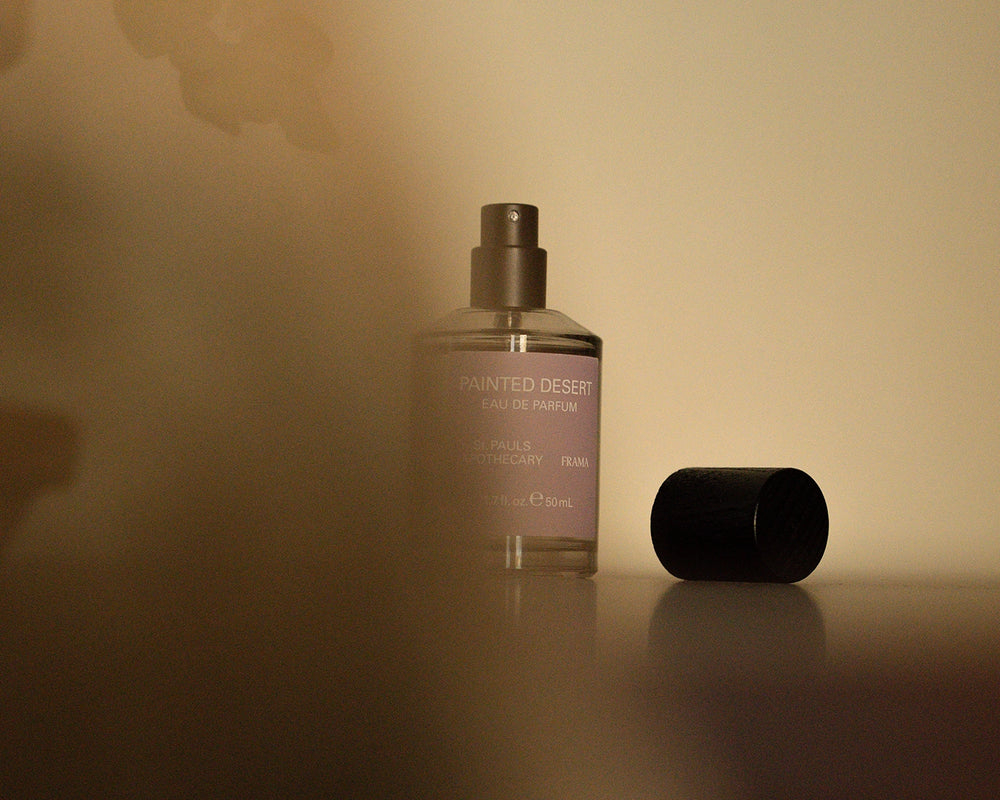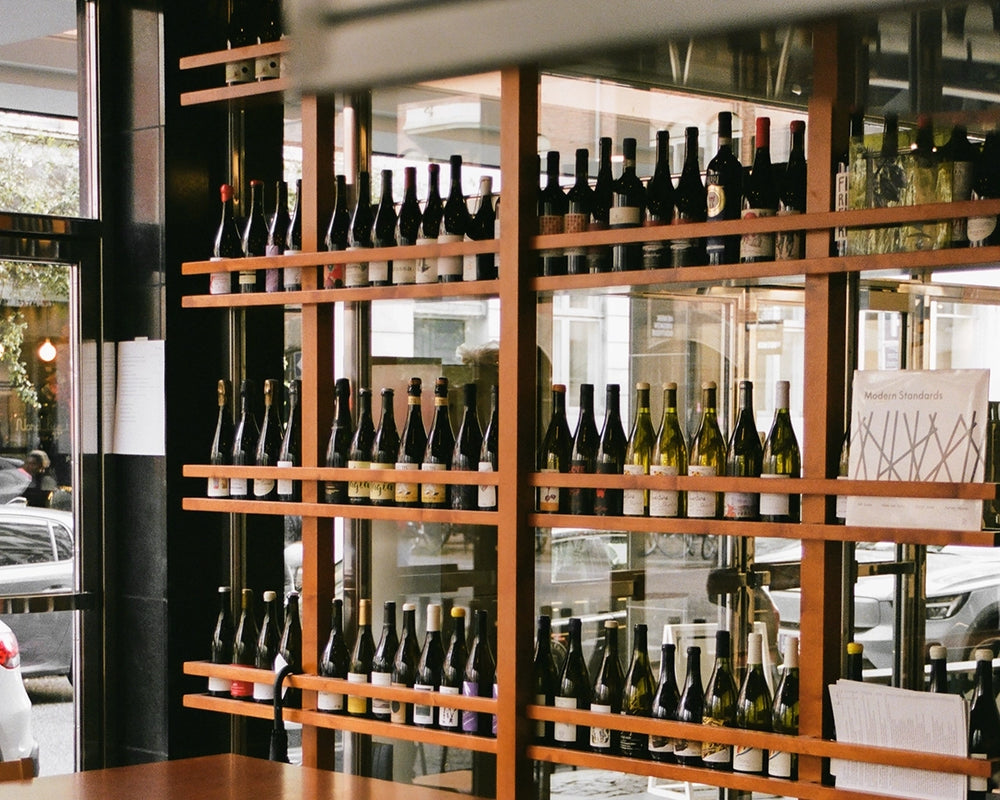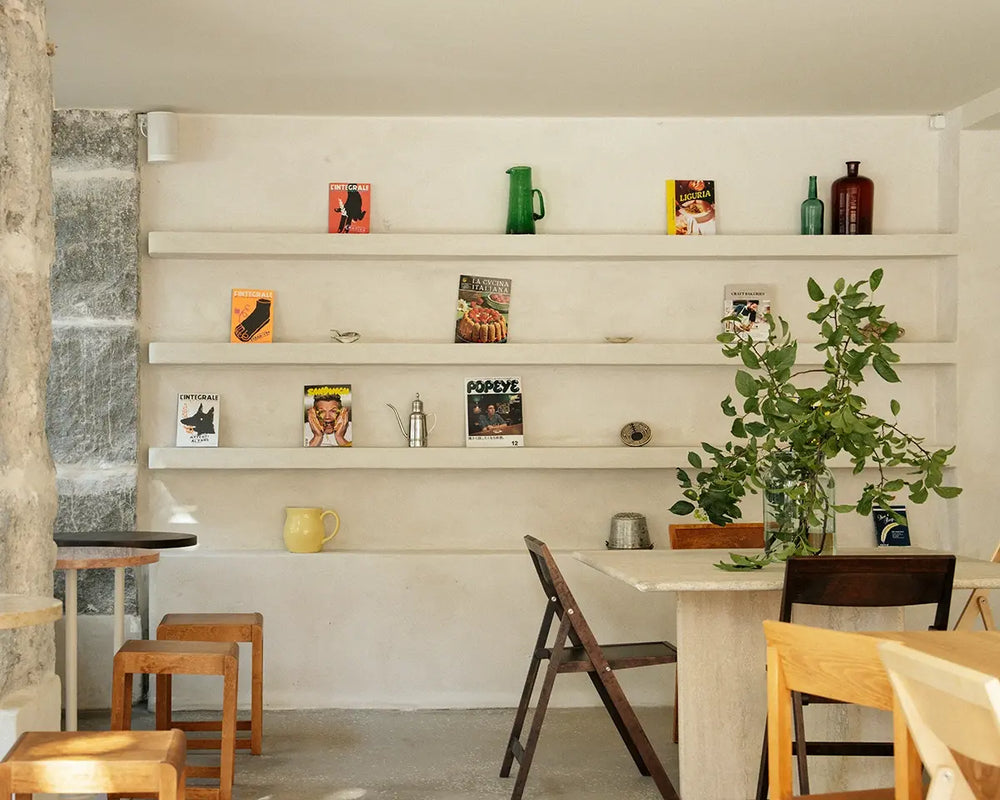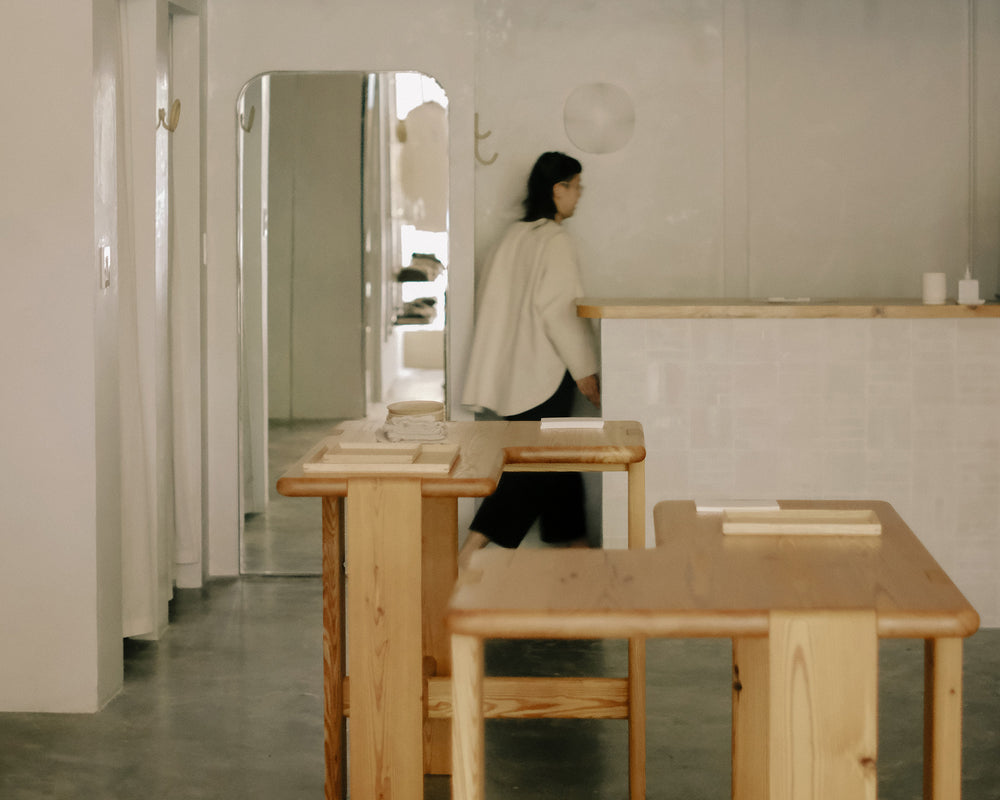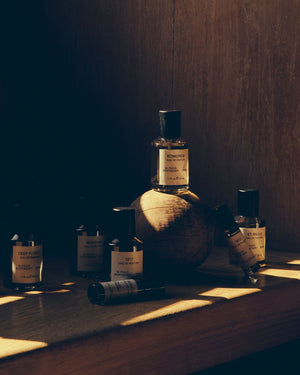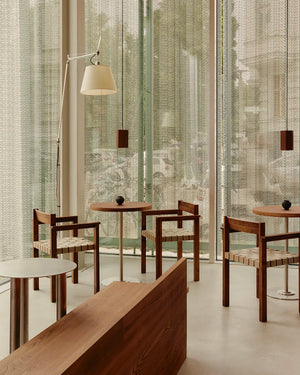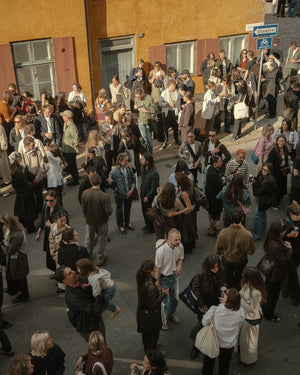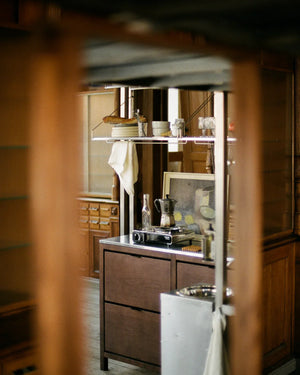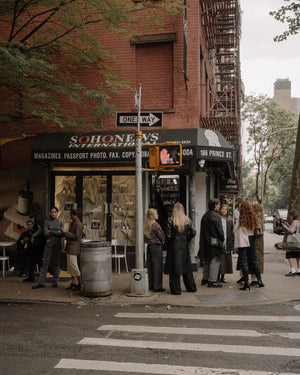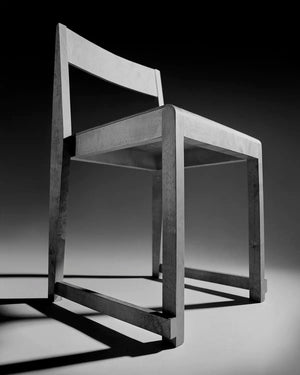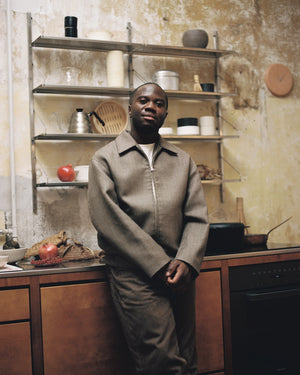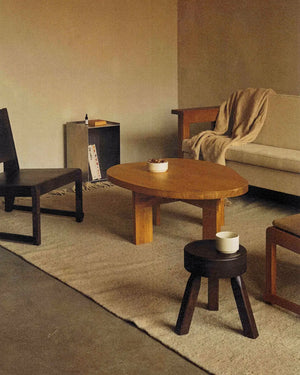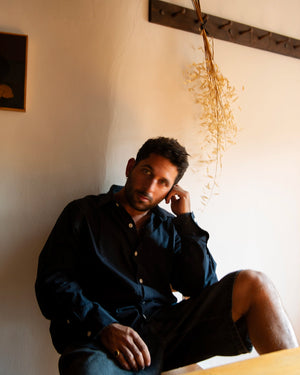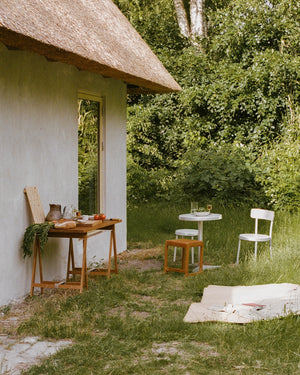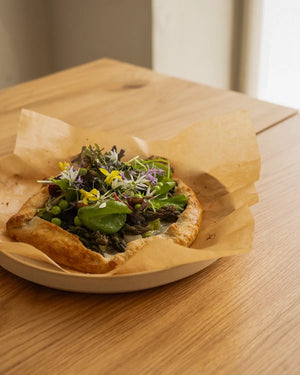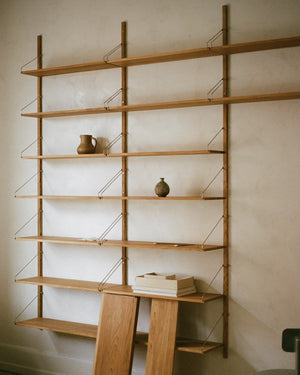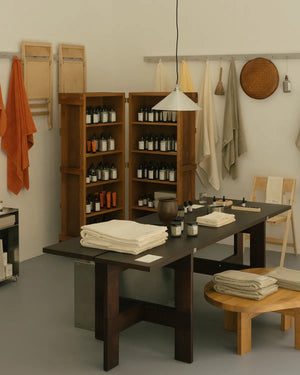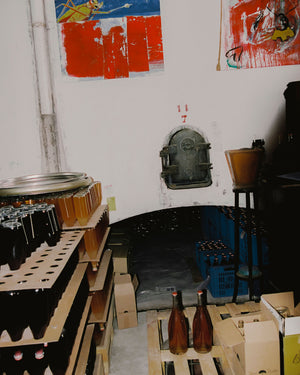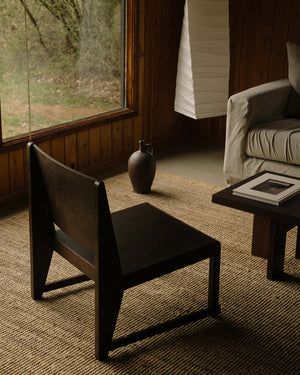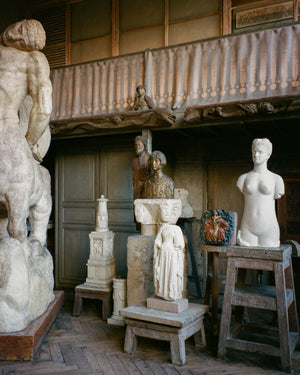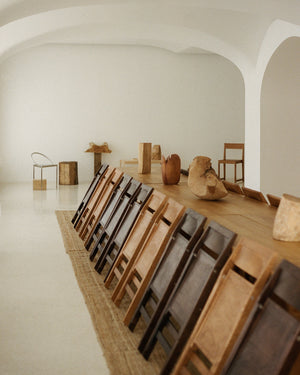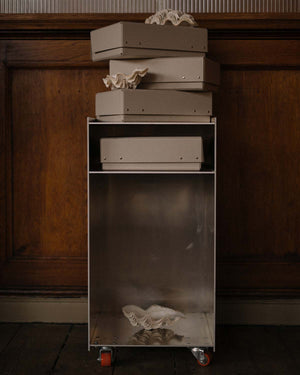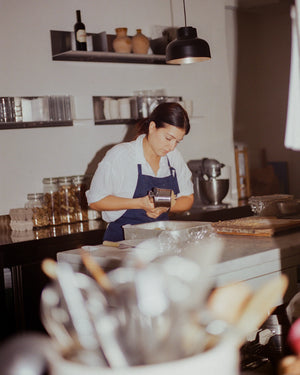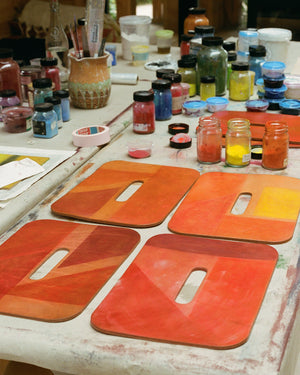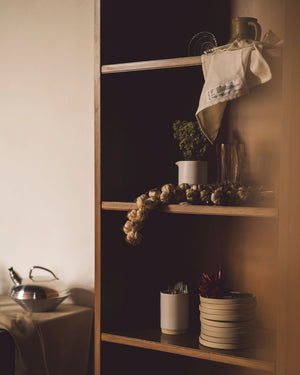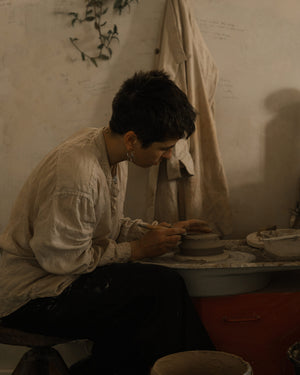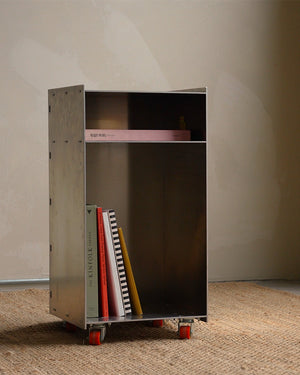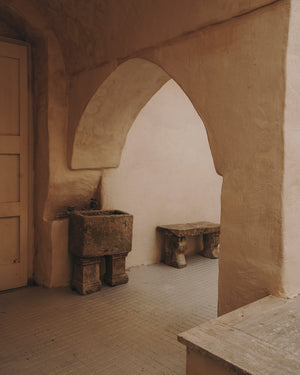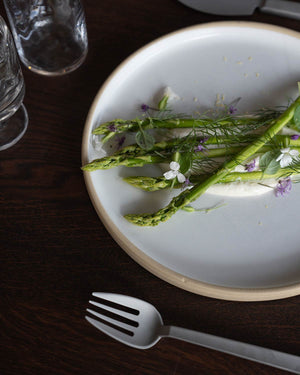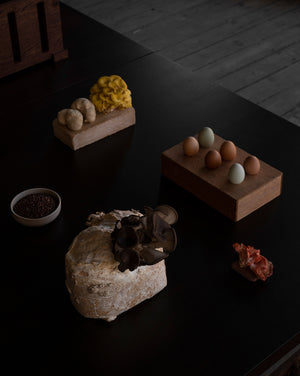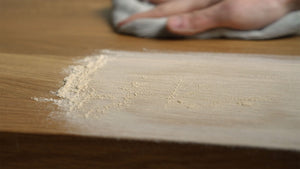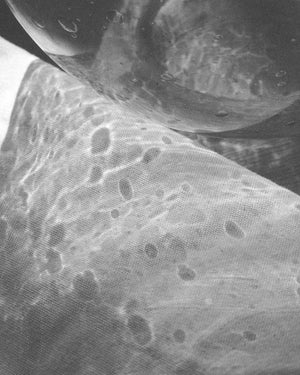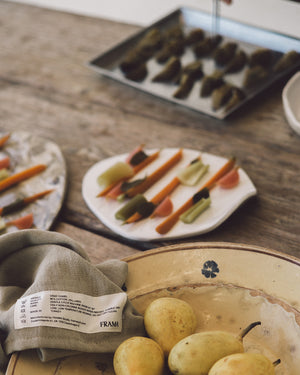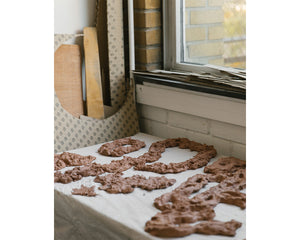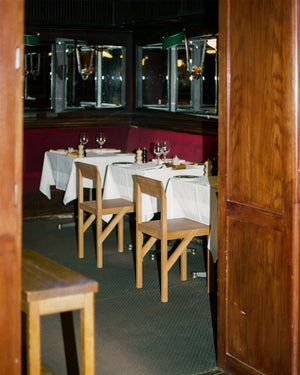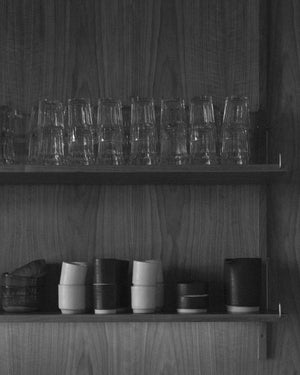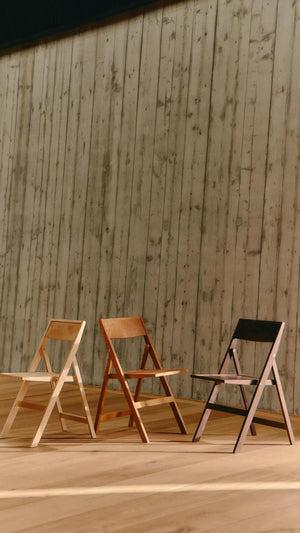
Casegoods: Iterative Craft
- Casegoods
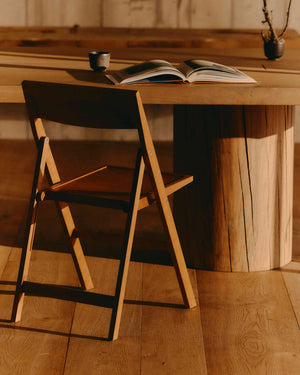
The collaboration between FRAMA and Mumbai-based design studio Casegoods is rooted in architectural influence, natural materials, and functional detail—uncompromising quality that leads to long-lasting use, and to future heirlooms for years to come. For Casegoods, as their community of maker-collaborators continues to grow, they are building off of the duality of Mumbai as a cultural center for technology as well as craft processes. As a meaningful anchor for the studio, the culture of the city brings generations-old craft practices into the contemporary. “Working in India there is an inherent frugality in how things are made and how they are repaired / restored / reclaimed / reused, that we have learned a lot from as designers.”
- Samuel Barclay, Co-Founder, Casegoods
Established in 2021 by Samuel Barclay, Erica Barclay, and Saleem Bhatri, today Casegoods is led by Kenneth Rodrigues and Raseel Sehmi. The team regularly expands and contracts through working with specialized artisans on a project-by-project basis, much like the approach FRAMA takes to collaboration that is guided by curiosity and experimentation. The partnership between Casegoods and FRAMA grew from a mutual tendency to work with talented artisans and manufacturers who specialize in their craft—bringing together the two brands and their architectural approaches directly. For the Mumbai-based team, their process remains the same from large to small-scale projects: iterative and experimental, whether working with full-scale building mock-ups or focusing on function, form, and performance at the object-level. As they describe it, “our sense of architecture comes from the process of design through making.”
- Casegoods
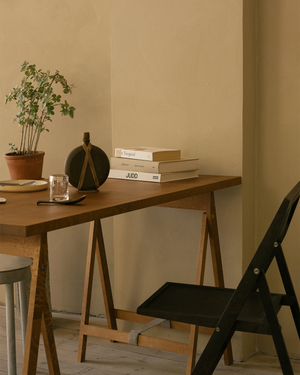
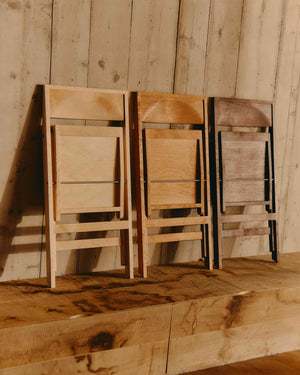
Their architectural background—Casegoods was born from Case Design, an architectural practice—influences their approach to producing pieces that last for generations. It might be assumed that interior furnishings and products have a shorter lifespan than buildings, but when approached with an architectural eye, they can be repaired, readapted, and reused to last as long as the structures they find themselves in. This background is clear in their studio’s collaborative culture as well. In their designs, it’s evident that the team has the perspective of those who are also adept at designing the rooms and buildings that their objects live in, resulting in a holistic process from start to finish. And a social approach in the work extends to the day-to-day culture, with studio lunches and studio travel to seek inspiration as points of convergence for the team.
This iterative, discursive approach is essential to the Casegoods process regardless of location. An example: the first designs to result from the collaboration with FRAMA are the Folding Flat Chair, Table, and Trestles, designed by Casegoods in their workshop. Through trials and discussions, these designs were refined in-house, and the relationship between each component of these pieces considered. The Folding Flat Table is made up of two independent elements: folding trestles and a tabletop. The trestles can be used with any tabletop for a result that is intimately personal—and possible to use with existing materials that may need a second chance. Permanent flexibility for timeless use, and environmentally considered in every detail. “The fact that it stacks and is collapsable is a benefit to the logistics challenges which is a huge environmental consideration.”
As the Casegoods team describes it, “the partnership developed organically through our collaborative approach to design.” With a keen eye toward environmental impact and an economy of use, collaboration is not only creatively productive for Casegoods but furthers these sustainability goals: working with others is essential to avoiding unwanted material waste, and using techniques and materials that may be based elsewhere in the world without the need for the environmental impact of transit and shipping. “We ensure use of salvaged materials whenever possible, and where we develop samples for ourselves or partners, we try to reuse the materials,” and work with artisans who do not heavily rely on mechanical processes; but rather generations-old craft. What sounds like a paradox of experimentation without waste becomes possible when a collaborative approach comes into view. “When we are thinking about how to design, we must engage in the process of working with ideas that are unencumbered by the preconceptions we have.”
- Samuel Barclay, Co-Founder, Casegoods
Even in this design-by-making process, Casegoods uses local, essential materials in order to reduce unwanted environmental impact. This aspect to the practice includes sustainably sourced and reclaimed timber, natural stone, recycled glass, recyclable metals, and natural fibers that are locally available to India. The stone they use, one of the most abundant materials on earth, is quarried domestically within India to reduce transportation and carbon emissions.
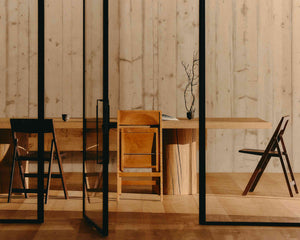
- Casegoods
Through this process, these pieces become future heirlooms. Each piece is designed in a way that can be dismantled into components as needed to ensure easy repair and prolonged use, in keeping with their forward-looking approach. This intersection with FRAMA’s approach to anticipating future trajectories of design—to create products that can be used for generations ahead—is centered around furnishing that is simple, beautiful, and functional. This allows for designs to adapt to the lives and interiors of individuals over time—a commitment to the accessibility of good design, and sustainability in the truest sense of the word.

